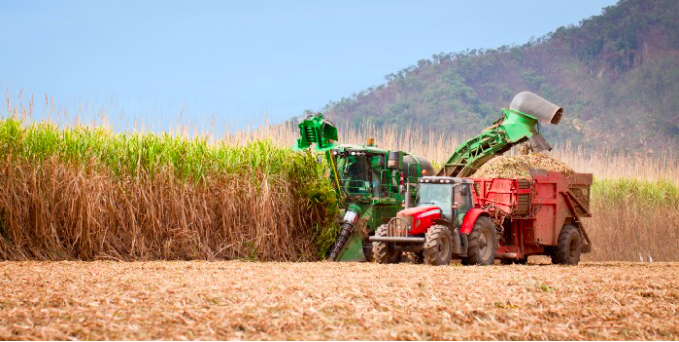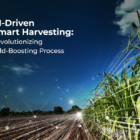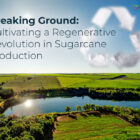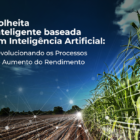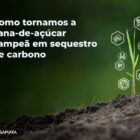In the last 15 years, the landscape has changed radically in Brazilian cane fields. Formerly stigmatized as unhealthy environments, in which temporary workers (the “boias-frias”) worked from sun to sun amid burned cane, they became a showcase for the mechanization of agriculture. In the 2007/2008 harvest, for example, manual harvesting was responsible for cutting no less than 75.6% of the sugarcane processed in Brazil. In the period 2019/2020, only 8.2% of production was harvested manually. According to a survey by the National Supply Company (Conab), around 5.5 thousand harvesters did almost all the work on almost 10 million hectares planted. Its sharp blades removed more than 670 million tons of cane from the field, according to IBGE,
It was a lot of progress in a short time. Brazil accounts for almost half of the global production, but despite the impressive investment in technology – driven by laws that directly impacted production models, such as those that prohibited the practice of burning in crops in several states -, the sugarcane industry is still it faces great challenges to boost productivity in the field and, consequently, the gains of the plants.
The main one is the lack of real information in relation to what happens in the field, due to the immensity of the cultivated areas and the natural characteristics of the crops. The great density of plants and the height reached by the cane makes it difficult to enter the cane fields, practically preventing efficient monitoring of the plots.
The solution has been aerial monitoring. Many plants have invested in structures with drones that fly over the cane fields to identify possible problems in the development of crops. Even so, they are not always able to transform the images obtained in reliable information, in the scale and in the necessary speed.
In addition, the data obtained were not efficiently made available to the mills’ decision-making spheres, causing opportunities to be solved within the time windows in which it is still possible to correct them and avoid losses.
FLIGHT TO THE FUTURE
Without knowing in depth everything that happens in the cane field, it is not possible to have a fully efficient agricultural management. Based on this premise, for more than three years, scientists and technicians from the Swiss agtech GAMAYA toured sugarcane plantation areas in several regions of Brazil. Armed with drones equipped with exclusive cameras with hyperspectral technology (which allow the visualization of up to 40 bands of colors, while traditional digital cameras process images from three bands), they took hundreds of photos and, from them, analyzed aspects physiological effects of plants at various stages of cultivation.
During this period, they carried out tests and proved the efficiency, in sugarcane crops, of applications they develop at the company’s headquarters in Switzerland. They talked to experts, immersed themselves in the culture of sugarcane and, above all, listened to producers about the main challenges and problems that impact the performance of their properties. The result of this work has just arrived in the country in the form of an advanced digital platform of integrated solutions, capable of taking remote monitoring to a new level: CANEFIT .
The platform’s proposal is precisely to offer the agricultural managers of the mills and their sugarcane suppliers tools that allow them to understand in a real and precise way what happens in the fields in each of their phases, from planting to harvest. Through advanced image analysis algorithms produced by drones or satellites, CANEFIT offers mills a solution package consisting of five products, each aimed at solving a critical problem identified by producers, from planting to harvest.
This technological set allows the miller to see the production in a wide way and to identify deficiencies in any of the plots. All data is available and concentrated on a single platform, the Gamaya Viewer , which facilitates access to information both online and offline from different devices. In other words, in the most crucial moments of sugarcane cultivation, the producer will be able to make decisions with greater agility, safety and assertiveness, obtaining efficiency gains, cost reduction and the environmental impact of his activities.
THE CANEFIT DIFFERENTIALS
– Focus on the main operational bottlenecks in sugarcane cultivation in Brazil, from planting to harvest;
– Analysis and large-scale images of drones and satellites;
– Speed in image processing and generation of reliable data, thanks to automation, with machine learning and artificial intelligence resources , and great computational capacity;
CANEFIT solutions are the result of an innovative combination of technology and great computational capacity. The Gamaya is a global leader in the agricultural use of hyperspectral images and used this knowledge in developing applications and analysis on other imaging options. In this way, the producer has access to unique analyzes, with greater richness of details in relation to the different stages of cultivation, even for analyzing images from those provided by RGB drone and satellite multispectral cameras. All of this more accurately and faster.
Article Reference: GAMAYA Brasil on LinkedIn
Article date: Brazil, June 25, 2020
